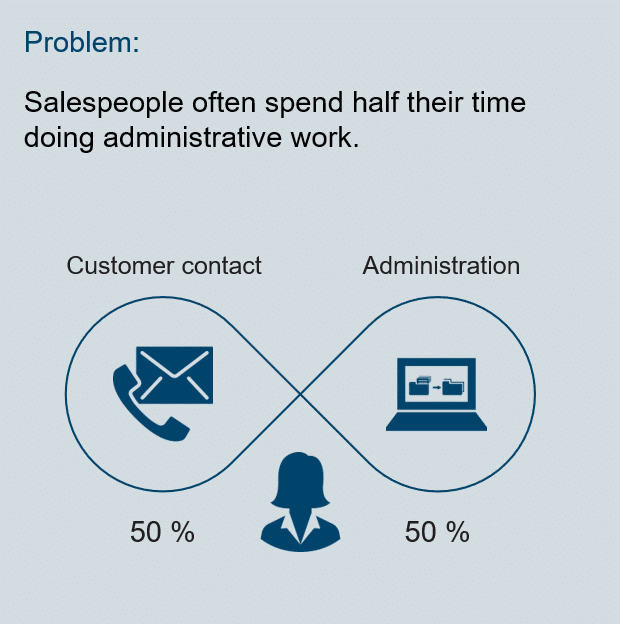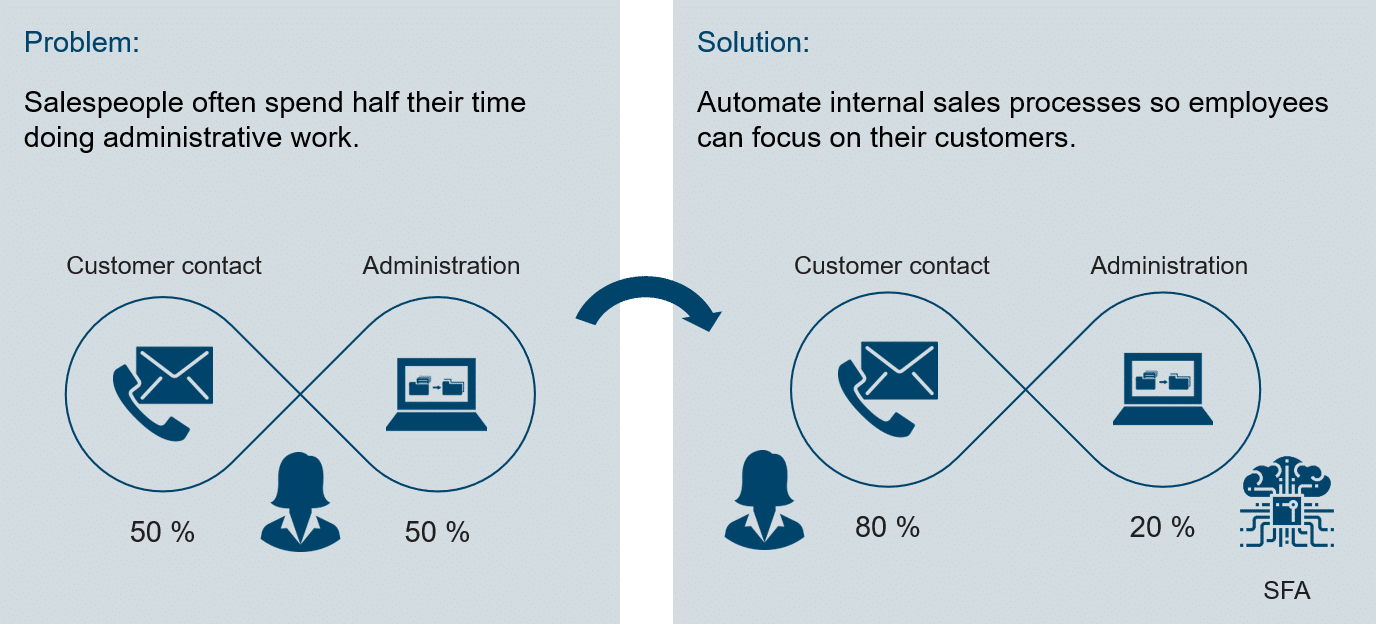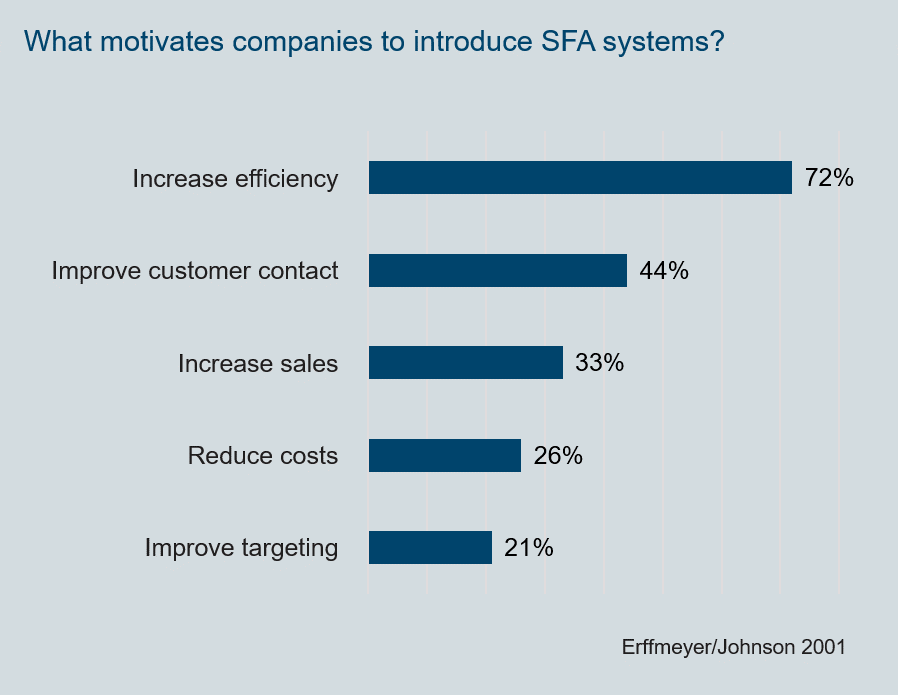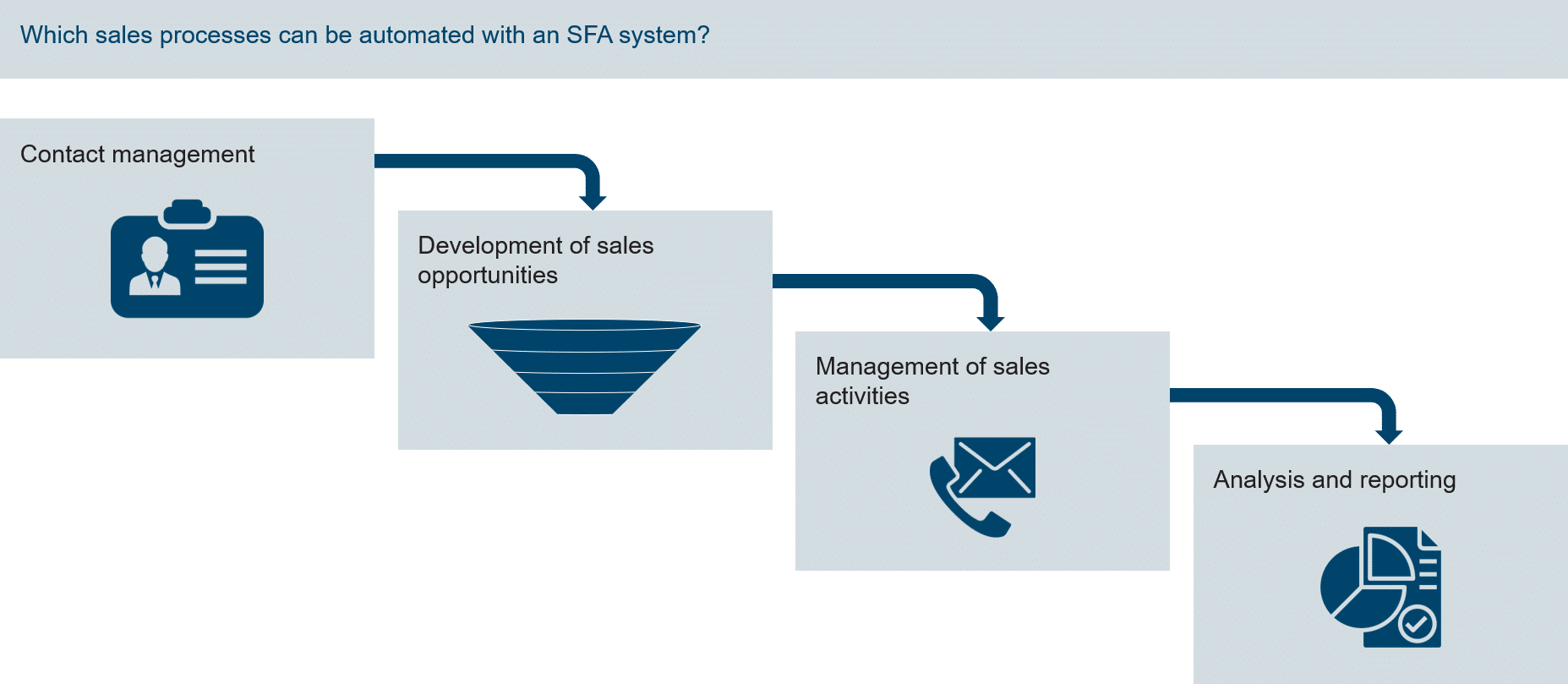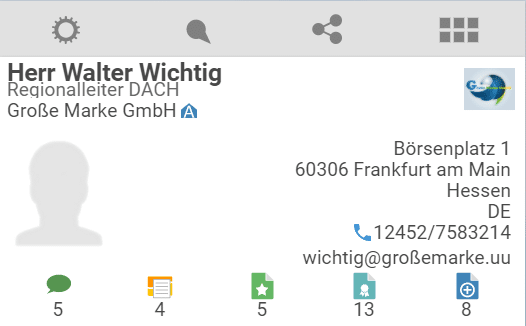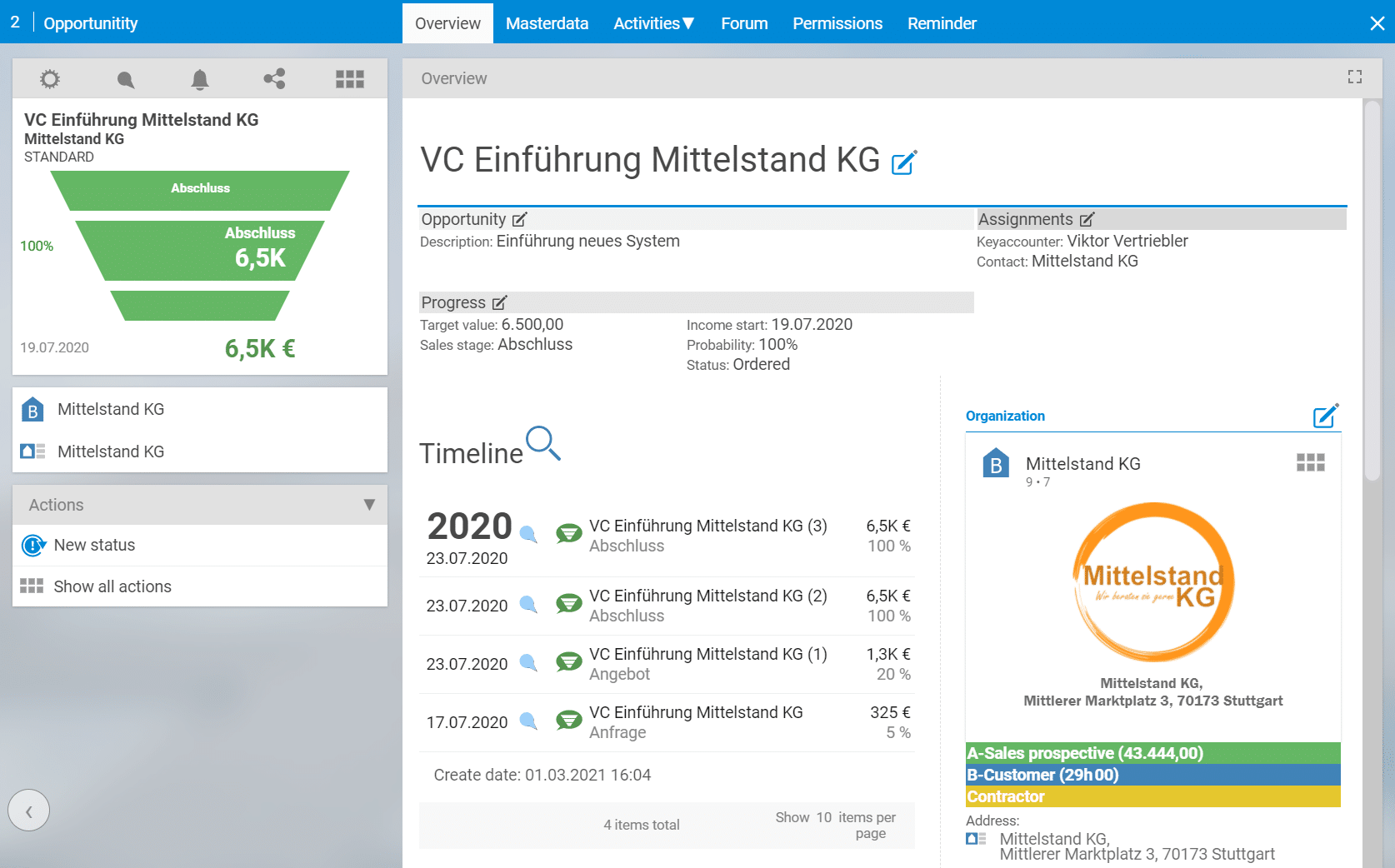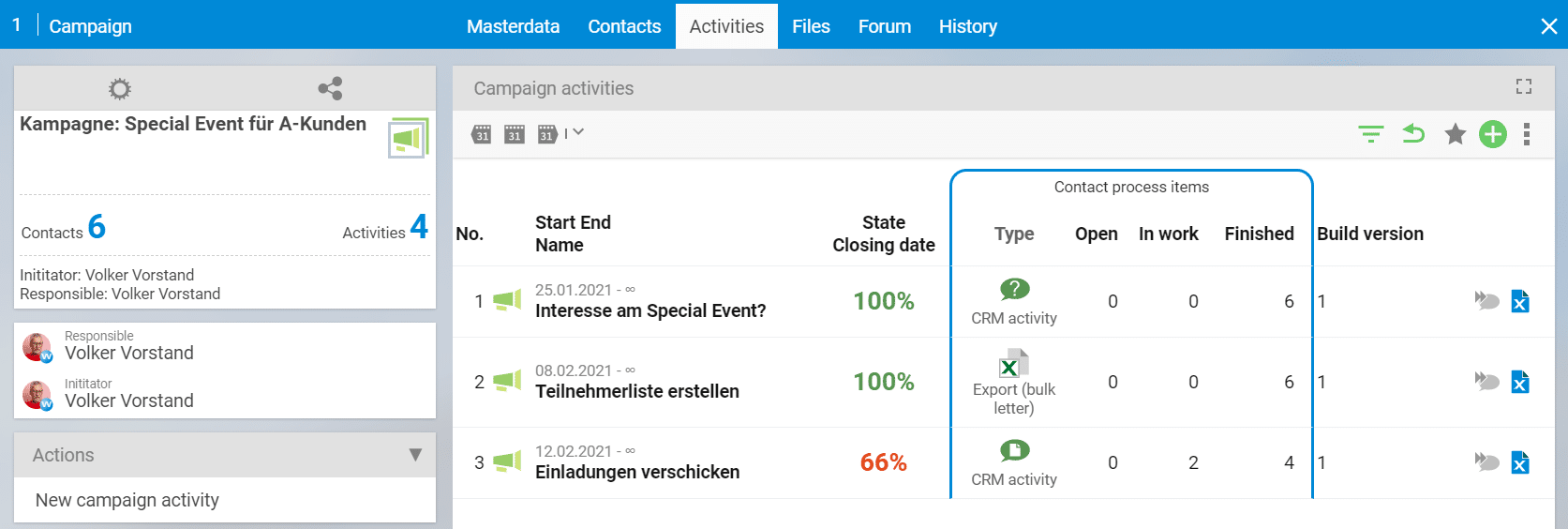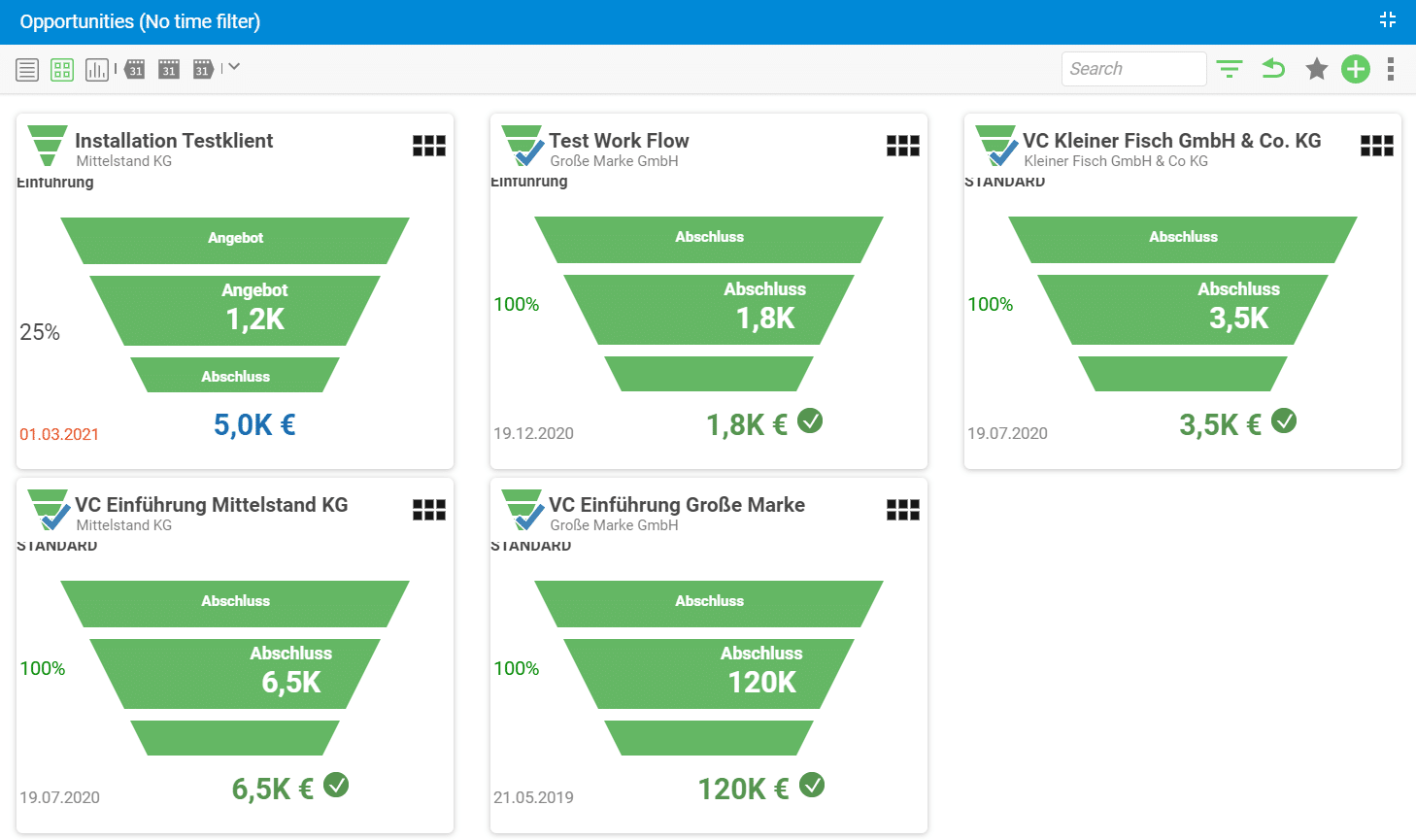What is Sales Force Automation?
Sales staff often spend half of their working time working on internal coordination tasks. As a result, they can only devote 50 % of their time to their actual main task, which is to take care of the customers.
Especially in key account management, this relationship is extremely unfavourable because key account managers are primarily hired for customer service. As the mouthpiece between the company and the key accounts, they take on an important interface position in CRM and should therefore permanently have their finger on the pulse of the customers.
It is noticeable that internal company administration often consists of routine procedures and small-scale standard tasks. They are not difficult and do not take long in themselves, but in total they add up to a mountain of work. It is a well-known fact that small livestock also make a mess.
Now imagine software that takes over exactly these tedious tasks for sales staff and key account managers. This is where Sales Force Automation (also Sales Automation or SFA) comes in. The core idea is as follows:
Used correctly, Sales Force Automation can help you relieve your staff and prioritise their tasks better. As a result, key account managers can focus on what is most profitable for your business: serving customers.
What are the benefits of Sales Force Automation for companies?
Surveys from the USA show: Efficiency gains are the reason most often cited by companies for introducing sales force automation. By outsourcing support tasks to intelligent software, the share of revenue-relevant activities in total working time increases.
For 44 percent of the companies surveyed, improved customer contact plays the decisive role in the introduction. Costs can also be reduced through Sales Force Automation. For example, if you compare the hourly rate of a key account manager with the costs that software causes when performing the same tasks, the savings become clear.
Of course, speed is not everything. The quality of sales activities ultimately determines the success or failure of sales efforts. Therefore, a software solution for sales force automation must offer real added value for its users.
This added value is evident in CRM on various levels:
Figure 4: Advantages of an SFA system
Salespeople, for example, benefit from shorter sales cycles because many time-consuming routine tasks are eliminated through automation. In turn, they can invest the time saved more effectively in developing their sales opportunities.
Sales managers are happy about a generally higher efficiency in sales and the close contact with customers. Through the automatic documentation of sales activities and their results, precise reports can be created at any time.
Management sees faster cash flow, greater market success and higher profitability as a result of the higher level of automation.
In fact, scientific studies show that sales force automation can achieve a measurable increase in various KPIs in CRM (cf. e.g. Moutot/Bascul 2008):
How can we benefit from Sales Force Automation with projectfacts?
As a user of projectfacts, you are in an excellent position to benefit from the many advantages of Sales Force Automation. In the following we will show you some examples that you can implement immediately (if you are not already using it extensively).
The following process steps are often followed in sales. Many tasks in them are recurring and do not directly help you generate sales. Nevertheless, they are important to keep track of, maintain contacts and manage sales activities.
Figure 5: Typical process steps in sales
For reasons of space, we can only present a few selected features here. In addition, the projectfacts software solution offers you many other possibilities to support and automate your sales. Feel free to contact us, we will find a suitable solution for you.
Contact management
With the contact manager you always keep track of your key accounts. All information about your contacts is automatically collected and clearly displayed on a virtual business card. In contrast to a conventional business card, however, projectfacts offers a variety of other options for managing your contacts:
- Identify connections between contacts and jump to the parent organisation.
- Contact your account directly – by mail, phone or letter.
- Store preferred contact types and letter salutations.
- Display all offers, orders, invoices, etc. linked to the contact.
- Create new sales opportunities or documents.
- …
Development of sales opportunities
Your customers go through a typical process from initial contact to sales contract. This is called a sales funnel. In projectfacts you have the possibility to individually configure several of these funnels depending on the type of offer.
For your employees, sales opportunities are an excellent tool to structure sales activities. In a sales opportunity all activities are bundled and documented. All offers created in the course of the sales process can be viewed and reused. Several parallel sales opportunities can also be created per contact. This gives you maximum clarity with a minimum of effort.
Management of sales activities
Everyday sales life is stressful. Good organisation is half the battle when it comes to managing tasks. projectfacts makes your life as easy as possible by helping you plan activities and reminding you when you need to.
With campaigns, you can easily carry out sales activities for a defined group of contacts. Tasks can be distributed to employees and the progress of the work is recorded and displayed. If you lose sight of something, projectfacts automatically reminds you with reminders. In this way, all tasks are completed promptly and reliably – without tapeworm emails or ad-hoc meetings.
Figure 8: Campaigns in projectfacts
Analysis and reporting
The report function in projectfacts allows you to compile and export a variety of individual reports. The graphical presentation can also be adapted with a click. The analysis of sales opportunities, for example, gives you a quick overview of your order situation. You can see recently commissioned projects and those that are currently in the pipeline. This way you always have an overview of where your customers are in the process. You recognise potential sales bottlenecks or order peaks in advance and can react in time.
Via the customer analysis, you can see which customers are currently causing the greatest employee utilisation. You can compare the booked project times with the ranking of your customers (A, B, C customers) and the corresponding contribution margins. This allows you to identify unprofitable projects at a glance.
Further tips and tricks for sales force automation with projectfacts
In addition to the main functions already presented, projectfacts offers a number of additional possibilities to increase the efficiency of your sales work:
- Automatic creation of documents (offer, order, invoice, etc.)
A whole range of documents are generated as part of the sales process. Many small and medium-sized enterprises create these documents manually. This costs a lot of time and is prone to errors. With projectfacts you can make the creation of quotations, orders, invoices and other documents easier. For example, if a standard offer is to be created, it can be generated with one click. Offer items, quantities and prices can be adapted just as easily. Addresses, text modules, layout and formatting are automatically adopted.
- Mail templates, text modules and automatic mail replies
Define any standard mail templates. This way you are perfectly prepared for a wide variety of enquiries and no longer have to waste time formulating the same content over and over again. Individual text modules can also be combined with each other. With automatic mail replies, the process can even be completely automated. Your customers receive immediate feedback and you no longer need to worry about anything.
- Telephone interface with speed dialling and caller identification
By creating contacts consistently in the system, you’ll never have to search for the right email or business card again. Instead, you can call the desired contact with a simple mouse click. Conversely, if the contact contacts you, the telephone number is automatically recognised. You know exactly who you are dealing with even before your counterpart answers by name. In addition, all recent interactions with the contact are visible. You also receive additional information, e.g. whether it is an A, B or C customer.
- Dynamic Word templates with cover letter and address block generation
If you already have Word templates for certain document types, these can be integrated into projectfacts. Address data can be automatically transferred to the template. Individual cover letters can also be generated dynamically and appear in your corporate design. Manual copying or layouting is now a thing of the past. Offers can, for example, be extended with personalised attachments that fit seamlessly into the overall document.
projectfacts offers you a variety of possibilities to automate your sales processes and make them more efficient. In this article we have given you a small insight into these possibilities. Feel free to contact us directly if you have any further questions or suggestions.
Your projectfacts team
Image sources:
Contributed image: © Sam – unsplash.com (2021)
Icons: © Smashicons. Freepik, Gregor Cresnar, phatplus, catkuro – www.flaticon.com (2021)

